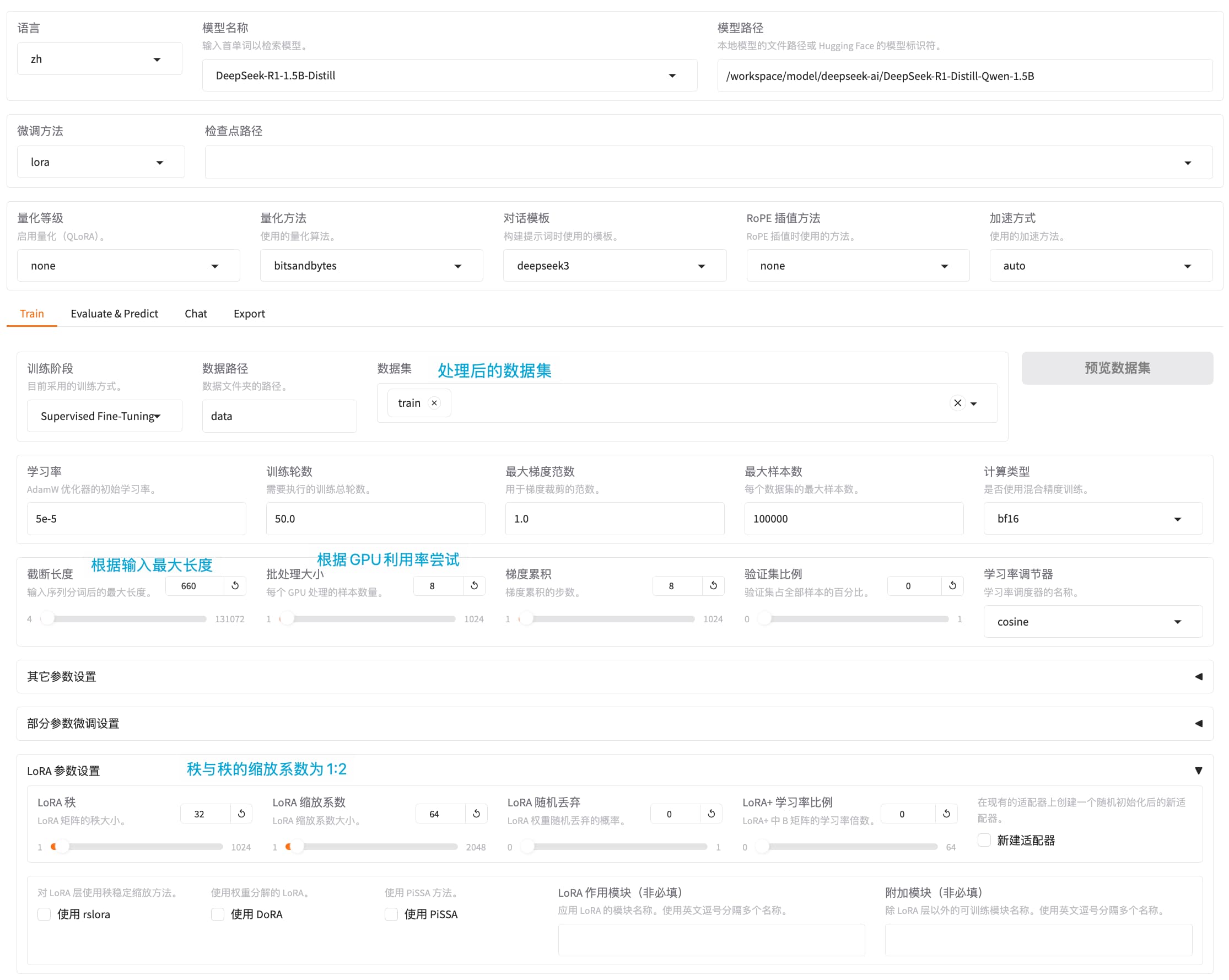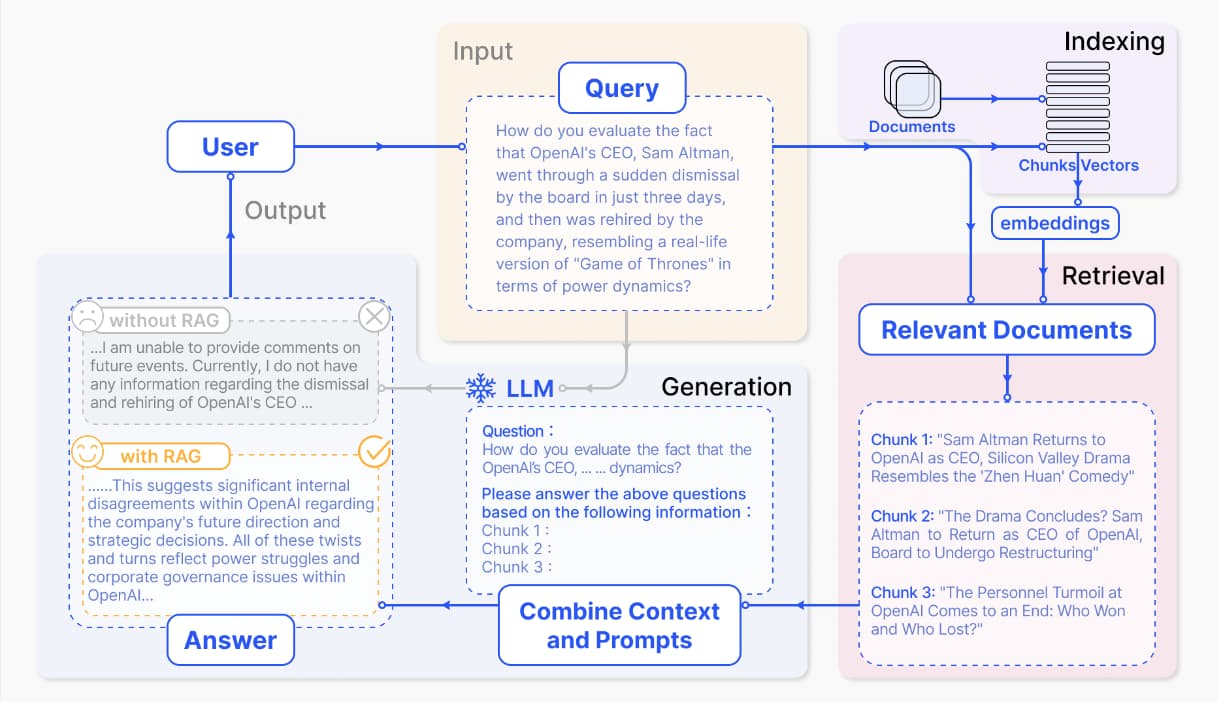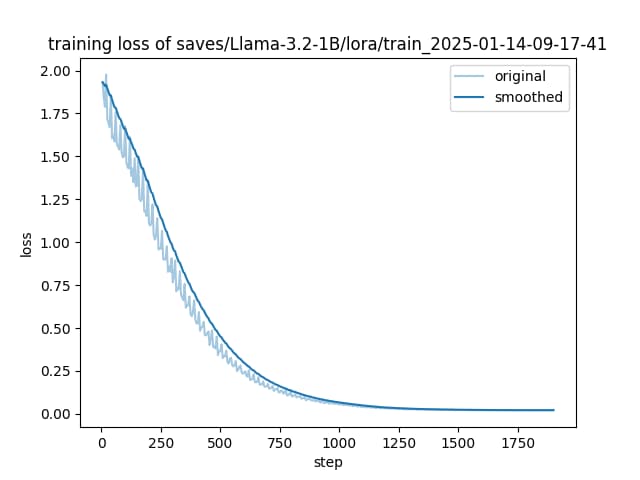基于BERT的中文评价情感分析
模型结构
config.json
{
"architectures": [
"BertForMaskedLM" # 模型类型:BERT模型,带有掩码
],
"attention_probs_dropout_prob": 0.1,
"directionality": "bidi",
"hidden_act": "gelu",
"hidden_dropout_prob": 0.1,
"hidden_size": 768, # 模型隐藏层
"initializer_range": 0.02,
"intermediate_size": 3072,
"layer_norm_eps": 1e-12,
"max_position_embeddings": 512,
"model_type": "bert",
"num_attention_heads": 12, # 多头自注意模型:12个头
"num_hidden_layers": 12,
"pad_token_id": 0,
"pooler_fc_size": 768,
"pooler_num_attention_heads": 12,
"pooler_num_fc_layers": 3,
"pooler_size_per_head": 128,
"pooler_type": "first_token_transform",
"type_vocab_size": 2,
"vocab_size": 21128 # 字典数量,字典中增加或者删除都要修改,与之对应
}
模型的net内容
# 加载预训练模型
import torch
from transformers import BertModel
DEVICE = torch.device("cuda" if torch.cuda.is_available() else "cpu")
pretrained = BertModel.from_pretrained("/Volumes/Date/huggingface/model/bert-base-chinese/models--bert-base-chinese/snapshots/c30a6ed22ab4564dc1e3b2ecbf6e766b0611a33f").to(DEVICE)
print(pretrained)
"""
BertModel(
(embeddings): BertEmbeddings( # 编码层(词向量化):文本位置编码编码为词向量
(word_embeddings): Embedding(21128, 768, padding_idx=0)
(position_embeddings): Embedding(512, 768)
(token_type_embeddings): Embedding(2, 768)
(LayerNorm): LayerNorm((768,), eps=1e-12, elementwise_affine=True)
(dropout): Dropout(p=0.1, inplace=False)
)
(encoder): BertEncoder( # 特征提取
(layer): ModuleList(
(0-11): 12 x BertLayer( # 12层
(attention): BertAttention(
(self): BertSdpaSelfAttention(
(query): Linear(in_features=768, out_features=768, bias=True)
(key): Linear(in_features=768, out_features=768, bias=True)
(value): Linear(in_features=768, out_features=768, bias=True)
(dropout): Dropout(p=0.1, inplace=False)
)
(output): BertSelfOutput(
(dense): Linear(in_features=768, out_features=768, bias=True)
(LayerNorm): LayerNorm((768,), eps=1e-12, elementwise_affine=True)
(dropout): Dropout(p=0.1, inplace=False)
)
)
(intermediate): BertIntermediate(
(dense): Linear(in_features=768, out_features=3072, bias=True)
(intermediate_act_fn): GELUActivation()
)
(output): BertOutput(
(dense): Linear(in_features=3072, out_features=768, bias=True)
(LayerNorm): LayerNorm((768,), eps=1e-12, elementwise_affine=True)
(dropout): Dropout(p=0.1, inplace=False)
)
)
)
)
(pooler): BertPooler( # 输出层
(dense): Linear(in_features=768, out_features=768, bias=True) #输出728特征
(activation): Tanh()
)
)
"""BERT(Bidirectional Encoder Representations from Transformers)模型由多个组件组成,每个组件负责不同的任务:
1. Embeddings 层(词向量化)
- Word Embeddings: 将输入文本中的每个单词映射为一个固定维度的向量(例如768维)。这是通过查找预训练的嵌入矩阵来实现的。
- Position Embeddings: 由于BERT是双向的,它需要位置信息来理解句子中单词的顺序。位置嵌入为每个单词添加了其在句子中的位置信息。
- Token Type Embeddings: 用于区分不同句子(例如在句子对任务中),以便模型知道哪些标记属于哪个句子。
- LayerNorm: 对嵌入进行归一化处理,以确保数值稳定。
- Dropout: 随机丢弃一部分神经元,防止过拟合。
2. Encoder 层(特征提取)
- BertEncoder: 包含多个 BertLayer,每个 BertLayer 又包含两个子模块:`Attention` 和 Feed-Forward Network。
- Attention:
- Self-Attention: 计算输入序列中每个单词与其他单词之间的关系。这使得模型可以关注到上下文中的相关信息。
- Output: 对自注意力的结果进行线性变换,并应用归一化和dropout。
- Intermediate:
- Linear: 扩展维度(例如从768维扩展到3072维),并应用激活函数(如GELU)。
- Output:
- Linear: 缩小维度(例如从3072维缩小回768维),并应用归一化和dropout。
3. Pooler 层(输出层)
- BertPooler: 用于生成一个固定长度的向量表示整个输入序列。通常取 [CLS] 标记对应的隐藏状态,并通过线性变换和激活函数(如Tanh)得到最终表示。
微调
微调是指在预训练模型的基础上,通过进一步的训练来适应特定的下游任务。BERT 模型通过预训练来学习语言的通用模式,然后通过微调来适应特定任务,如情感分析、命名实体识别等。微调过程中,通常冻结 BERT 的预训练层,只训练与下游任务相关的层。
数据集处理
加载数据集
from datasets import list_datasets,load_dataset,load_from_disk
# print(list_datasets())
#在线加载数据集
# dataset = load_dataset(path="NousResearch/hermes-function-calling-v1",split="train",cache_dir="dataset/")
# #缓存数据到本地
# dataset.save_to_disk(dataset_path="dataset/mydata/")
# print(dataset)
# #转为csv格式
# dataset.to_csv(path_or_buf="dataset/hermes-function-calling-v1.csv")
# 加载磁盘数据(huggingface)
# dataset = load_from_disk(r"D:\PycharmProjects\demo_14\dataset_test\dataset\mydata")
# print(dataset)
#加载csv数据
# dataset = load_dataset(path="csv",data_files=r"D:\PycharmProjects\demo_14\dataset_test\dataset\hermes-function-calling-v1.csv")
# print(dataset)
# 加载磁盘数据(huggingface)
dataset = load_from_disk(r"D:\PycharmProjects\demo_14\dataset_test\dataset\ChnSentiCorp")
print(dataset)
#取出训练集
train_dataset = dataset["train"]
print(train_dataset)
#查看数据
for data in train_dataset:
print(data)数据集格式
Hugging Face 的 datasets 库支持多种数据集格式,如 CSV、JSON、TFRecord 等。在本案例中,使用CSV 格式,CSV 文件应包含两列:一列是文本数据,另一列是情感标签。
数据集信息
加载数据集后,可以查看数据集的基本信息,如数据集大小、字段名称等。这有助于我们了解数据的分布情况,并在后续步骤中进行适当的处理。
{
"builder_name": "chn_senti_corp",
"citation": "",
"config_name": "default",
"dataset_size": 3871919,
"description": "",
"download_checksums": {
"https://drive.google.com/u/0/uc?id=1uV-aDQoMI51A27OxVgJnzxqZFQqkDydZ&export=download": {
"num_bytes": 3032906,
"checksum": "5394d3b2867ece9452a275fc84924ae030d827bb57b90c6aed6009ffdd1b8cee"
},
"https://drive.google.com/u/0/uc?id=1kI_LUYm9m0pVGDb4LHqtjwauUrIGo_rC&export=download": {
"num_bytes": 375862,
"checksum": "a8770badf76a638fb21f92d5be9280eb8c50a7644dbe2dd881aff040c6fe6513"
},
"https://drive.google.com/u/0/uc?id=1YJkSqGFeo-8ifmgVbxGMTte7Y-yxPHg7&export=download": {
"num_bytes": 371381,
"checksum": "5ffc04692e4f7bf6b18eb9f94cef3090bd5fb55bb3e138ac7080f0739529ef1f"
}
},
"download_size": 3780149,
"features": {
"text": {
"dtype": "string",
"id": null,
"_type": "Value"
},
"label": { # 标签
"num_classes": 2,
"names": [
"negative", # 分类,积极:消极
"positive"
],
"id": null,
"_type": "ClassLabel"
}
},
"homepage": "",
"license": "",
"post_processed": null,
"post_processing_size": null,
"size_in_bytes": 7652068,
"splits": {
"train": { # 训练集
"name": "train",
"num_bytes": 3106365,
"num_examples": 9600,
"dataset_name": "chn_senti_corp"
},
"validation": { # 校验集
"name": "validation",
"num_bytes": 385021,
"num_examples": 1200,
"dataset_name": "chn_senti_corp"
},
"test": { # 测试集
"name": "test",
"num_bytes": 380533,
"num_examples": 1200,
"dataset_name": "chn_senti_corp"
}
},
"supervised_keys": null,
"task_templates": null,
"version": {
"version_str": "0.0.0",
"description": null,
"major": 0,
"minor": 0,
"patch": 0
}
}制作Dataset
加载数据集后,需要对其进行处理以适应模型的输入格式。这包括数据清洗、格式转换等操作。
from datasets import Dataset
# 制作 Dataset
dataset = Dataset.from_dict({
'text': ['位置尚可,但距离海边的位置比预期的要差的多', '5月8日付款成功,当当网显示5月10
日发货,可是至今还没看到货物,也没收到任何通知,简不知怎么说好!!!', '整体来说,本书还是不错
的。至少在书中描述了许多现实中存在的司法系统方面的问题,这是值得每个法律工作者去思考的。尤其是让
那些涉世不深的想加入到律师队伍中的年青人,看到了社会特别是中国司法界真实的一面。缺点是:书中引用
了大量的法律条文和司法解释,对于已经是律师或有一定工作经验的法律工作者来说有点多余,而且所占的篇
幅不少,有凑字数的嫌疑。整体来说还是不错的。不要对一本书提太高的要求。'],
'label': [0, 1, 1] # 0 表示负向评价,1 表示正向评价
})
# 查看数据集信息
print(dataset)数据集字段
在制作 Dataset 时,需定义数据集的字段。在本案例中,定义了两个字段: text (文本)和label (情感标签)。每个字段都需要与模型的输入和输出匹配。
from torch.utils.data import Dataset
from datasets import load_from_disk
class MyDataset(Dataset):
# 通过 split 参数选择不同的数据集部分,便于在训练、验证和测试阶段使用不同的数据。
def __init__(self, split):
# 函数用于从磁盘加载已经保存的数据集。确保数据集路径正确且数据集已保存。
self.dataset = load_from_disk("/Volumes/Date/huggingface/dataset/ChnSentiCorp")
# 根据 split 参数选择数据集部分
if split == "train":
self.dataset = self.dataset["train"]
elif split == "validation":
self.dataset = self.dataset["validation"]
elif split == "test":
self.dataset = self.dataset["test"]
def __len__(self):
# 返回数据集的长度
return len(self.dataset)
def __getitem__(self, item):
# 根据索引获取样本的文本和标签
text = self.dataset[item]["text"]
label = self.dataset[item]["label"]
# 返回包含文本和标签的字典
return text,label
“”“
('我11月9日下的订单,可到现在了还是杳无音信,还有首页不是打出6.8折封顶的宣传吗,但实际却有超过6.8折的东西在销售,电话咨询回答只能以购物车的价格为准,当当的服务真的要改善一下,不要以为做大了就不思进取了.', 0)
('敢怒敢言!为我们指点迷津!为中国指明了前进的方向!为世人敲响了警钟!中国的上层精英们睁开你们沉睡的双眼吧!不要每天醉生梦死了!不能再奴颜婢膝!讨好外国人了!认清历史与现实!我们是中国人!骨子里流着中国的血!为了我们腾飞的祖国贡献应有的贡献和作为吧!我虽身为一介平民学子!但我最起码还知道国家兴亡匹夫有责!祖国的未来需要大家的协同努力!好了!就说这些吧!', 1)
('全新的外观和16:9宽屏设计,采用当前主流的45nm芯及16:9黄金比例宽屏,紧跟随市面主流脚步。整机线条很圆润,“acer”LOGO内嵌A盖正中央,灯管的照射下显得十分抢眼,屏幕方面则跟随主流市场,采用14寸LED背光屏,显示效果相当好,16:9规格的分辨率也更好地配合了高清影音,尤其值得称赞的是键盘运用了类似索尼笔记本特色的巧克力键盘,键位突出,并且多媒体快捷键的位置也重新设计。整机更扎实靓丽', 1)
('东西很小巧,外观挺漂亮的,有珍珠漆的效果,外观工艺做的还是不错,塑料模具不错,速度也挺好的。', 1)
('宏基,自带linux.开机无法使用,咨询售后是由于没有完全安装好。所以只能另装XP 宏基自带手册不全,说明书简单,差不多都是英文 自带软件为英文界面,安装不便 安装完成后,系统无声音 发热大', 0)
('李嘉诚说过一个人35岁之前要努力赚钱,35岁之后就要考虑以钱生钱。其实即使没看过李富豪说的这句话,好象人一过了30岁都会开始考虑养老的问题,于是如何理财实现财富增长就变得日益重要起来,我就是这样。当理财的愿望日益迫切,面对众多的理财产品,首先想到的就是找本好书来看看。这本书很实用,言之有物,有理论也有实务,可以帮助大家了解各种理财产品进而选择适合自己的。总之,读后受益匪浅。', 1)
('都是谁说的好啊,我也买了。可是看不懂,我妈看了也说没啥用。哎。。。。。。。。', 0)
”“”load_dataset :用于从磁盘加载数据集,可以支持多种格式(CSV、JSON 等)。
len 方法:返回数据集的大小,便于之后在训练中使用。
getitem 方法:根据索引返回单个数据条目(文本和标签),这是标准的 PyTorchDataset 类格式。
数据集信息
制作 Dataset 后,可以通过 dataset.info 等方法查看其大小、字段名称等信息,以确保数据集的正确性和完整性。
DatasetInfo(description = '', citation = '', homepage = '', license = '', features = {
'text': Value(dtype = 'string', id = None),
'label': ClassLabel(names = ['negative', 'positive'], id = None)
}, post_processed = None, supervised_keys = None, builder_name = 'chn_senti_corp', dataset_name = None, config_name = 'default', version = 0.0 .0, splits = {
'train': SplitInfo(name = 'train', num_bytes = 3106365, num_examples = 9600, shard_lengths = None, dataset_name = 'chn_senti_corp'),
'validation': SplitInfo(name = 'validation', num_bytes = 385021, num_examples = 1200, shard_lengths = None, dataset_name = 'chn_senti_corp'),
'test': SplitInfo(name = 'test', num_bytes = 380533, num_examples = 1200, shard_lengths = None, dataset_name = 'chn_senti_corp')
}, download_checksums = {
'https://drive.google.com/u/0/uc?id=1uV-aDQoMI51A27OxVgJnzxqZFQqkDydZ&export=download': {
'num_bytes': 3032906,
'checksum': '5394d3b2867ece9452a275fc84924ae030d827bb57b90c6aed6009ffdd1b8cee'
},
'https://drive.google.com/u/0/uc?id=1kI_LUYm9m0pVGDb4LHqtjwauUrIGo_rC&export=download': {
'num_bytes': 375862,
'checksum': 'a8770badf76a638fb21f92d5be9280eb8c50a7644dbe2dd881aff040c6fe6513'
},
'https://drive.google.com/u/0/uc?id=1YJkSqGFeo-8ifmgVbxGMTte7Y-yxPHg7&export=download': {
'num_bytes': 371381,
'checksum': '5ffc04692e4f7bf6b18eb9f94cef3090bd5fb55bb3e138ac7080f0739529ef1f'
}
}, download_size = 3780149, post_processing_size = None, dataset_size = 3871919, size_in_bytes = 7652068)Vocab字典操作
在微调 BERT 模型之前,需要将模型的词汇表(vocab)与数据集中的文本匹配。这一步骤确保输入的文本能够被正确转换为模型的输入格式。
from transformers import BertTokenizer
from datasets import load_from_disk
# 加载磁盘数据(huggingface)
dataset = load_from_disk("/Volumes/Date/huggingface/dataset/ChnSentiCorp")
print(dataset)
# 取出训练集
train_dataset = dataset["train"]
# 查看数据
for data in train_dataset:
print(data)
# 加载 BERT 模型的 vocab 字典
tokenizer = BertTokenizer.from_pretrained(
"/Volumes/Date/huggingface/model/bert-base-chinese/models--bert-base-chinese/snapshots/c30a6ed22ab4564dc1e3b2ecbf6e766b0611a33f")
# 将数据集中的文本转换为 BERT 模型所需的输入格式
dataset_info = dataset.map(lambda x: tokenizer(x['text'],
add_special_tokens=True,
max_length=50,
truncation=True,
padding=True,
return_tensors="pt"), batched=True)
# 查看数据集信息
print(dataset_info)
"""
Map: 100%|██████████| 9600/9600 [00:02<00:00, 3564.38 examples/s]
Map: 100%|██████████| 1200/1200 [00:00<00:00, 2979.70 examples/s]
Map: 100%|██████████| 1200/1200 [00:00<00:00, 3547.16 examples/s]
DatasetDict({
train: Dataset({
features: ['text', 'label', 'input_ids', 'token_type_ids', 'attention_mask'],
num_rows: 9600
})
validation: Dataset({
features: ['text', 'label', 'input_ids', 'token_type_ids', 'attention_mask'],
num_rows: 1200
})
test: Dataset({
features: ['text', 'label', 'input_ids', 'token_type_ids', 'attention_mask'],
num_rows: 1200
})
})
"""return_tensors 是 Hugging Face 的 datasets 和 transformers 库中常用的一个参数,用于指定返回张量的类型。它通常出现在数据集处理和模型输入准备的过程中,特别是在使用 Dataset.map 方法或 DataCollator 类时。
return_tensors 参数决定了返回的数据格式是哪种类型的张量。常见的选项包括:
pt:返回 PyTorch 张量(torch.Tensor)。
tf:返回 TensorFlow 张量(tf.Tensor)。
np:返回 NumPy 数组(numpy.ndarray)。
数据预处理:在对数据集进行预处理时,可以使用 return_tensors 参数来确保输出的数据格式与所使用的深度学习框架兼容。
模型输入:在将数据传递给模型之前,确保数据是以正确的张量格式提供的,以便模型可以直接使用这些数据进行训练或推理。
词汇表(vocab)
BERT 模型使用词汇表(vocab)将文本转换为模型可以理解的输入格式。词汇表包含所有模型已知的单词及其对应的索引。确保数据集中的所有文本都能找到对应的词汇索引是至关重要的。
99 [unused98]
101 [UNK]
102 [MASK]
2635 <S>
2635 !
3746 风
3846 ##风文本转换
使用 tokenizer 将文本分割成词汇表中的单词,并转换为相应的索引。此步骤需要确保文本长度、特殊字符处理等都与 BERT 模型的预训练设置相一致。
input_ids : [[101, 4635, 3189, 898, 2255, 2226, 102], [101, 2577, 4708, 1282, 1146, 4080, 1220, 4638, 2552, 2658, 3123, 3216, 8024, 1377, 3221, 4692, 4708, 4692, 4708, 1355, 4385, 8024, 1762, 3123, 3216, 2130, 3684, 1400, 8024, 1139, 4385, 671, 7415, 5101, 5439, 7962, 4638, 1220, 4514, 4275, 8013, 2458, 1993, 6820, 2577, 4542, 3221, 679, 3221, 6615, 6843, 4638, 702, 1166, 4385, 6496, 8024, 1377, 3221, 1400, 3341, 1355, 4385, 3680, 2476, 100, 1400, 7481, 6963, 3300, 8013, 4696, 679, 4761, 6887, 4495, 772, 1555, 2582, 720, 2682, 4638, 8024, 2769, 2682, 4692, 4638, 3221, 4344, 1469, 5439, 7962, 8024, 679, 3221, 5101, 5439, 7962, 8013, 1963, 3362, 1322, 2157, 3221, 2682, 6615, 6843, 4638, 6413, 8024, 6929, 2218, 1059, 1947, 5101, 5439, 7962, 1469, 1538, 5439, 7890, 6963, 6615, 6843, 8024, 1372, 1762, 3680, 2476, 100, 1400, 7481, 3924, 1217, 671, 7415, 5050, 784, 720, 8043, 8043, 5042, 4684, 3221, 4514, 6026, 3924, 6639, 8013, 8013, 102]]
token_type_ids : [[0, 0, 0, 0, 0, 0, 0], [0, 0, 0, 0, 0, 0, 0, 0, 0, 0, 0, 0, 0, 0, 0, 0, 0, 0, 0, 0, 0, 0, 0, 0, 0, 0, 0, 0, 0, 0, 0, 0, 0, 0, 0, 0, 0, 0, 0, 0, 0, 0, 0, 0, 0, 0, 0, 0, 0, 0, 0, 0, 0, 0, 0, 0, 0, 0, 0, 0, 0, 0, 0, 0, 0, 0, 0, 0, 0, 0, 0, 0, 0, 0, 0, 0, 0, 0, 0, 0, 0, 0, 0, 0, 0, 0, 0, 0, 0, 0, 0, 0, 0, 0, 0, 0, 0, 0, 0, 0, 0, 0, 0, 0, 0, 0, 0, 0, 0, 0, 0, 0, 0, 0, 0, 0, 0, 0, 0, 0, 0, 0, 0, 0, 0, 0, 0, 0, 0, 0, 0, 0, 0, 0, 0, 0, 0, 0, 0, 0, 0, 0, 0, 0, 0, 0, 0, 0, 0, 0, 0]]
special_tokens_mask : [[1, 0, 0, 0, 0, 0, 1], [1, 0, 0, 0, 0, 0, 0, 0, 0, 0, 0, 0, 0, 0, 0, 0, 0, 0, 0, 0, 0, 0, 0, 0, 0, 0, 0, 0, 0, 0, 0, 0, 0, 0, 0, 0, 0, 0, 0, 0, 0, 0, 0, 0, 0, 0, 0, 0, 0, 0, 0, 0, 0, 0, 0, 0, 0, 0, 0, 0, 0, 0, 0, 0, 0, 0, 0, 0, 0, 0, 0, 0, 0, 0, 0, 0, 0, 0, 0, 0, 0, 0, 0, 0, 0, 0, 0, 0, 0, 0, 0, 0, 0, 0, 0, 0, 0, 0, 0, 0, 0, 0, 0, 0, 0, 0, 0, 0, 0, 0, 0, 0, 0, 0, 0, 0, 0, 0, 0, 0, 0, 0, 0, 0, 0, 0, 0, 0, 0, 0, 0, 0, 0, 0, 0, 0, 0, 0, 0, 0, 0, 0, 0, 0, 0, 0, 0, 0, 0, 0, 1]]
length : [7, 151]
attention_mask : [[1, 1, 1, 1, 1, 1, 1], [1, 1, 1, 1, 1, 1, 1, 1, 1, 1, 1, 1, 1, 1, 1, 1, 1, 1, 1, 1, 1, 1, 1, 1, 1, 1, 1, 1, 1, 1, 1, 1, 1, 1, 1, 1, 1, 1, 1, 1, 1, 1, 1, 1, 1, 1, 1, 1, 1, 1, 1, 1, 1, 1, 1, 1, 1, 1, 1, 1, 1, 1, 1, 1, 1, 1, 1, 1, 1, 1, 1, 1, 1, 1, 1, 1, 1, 1, 1, 1, 1, 1, 1, 1, 1, 1, 1, 1, 1, 1, 1, 1, 1, 1, 1, 1, 1, 1, 1, 1, 1, 1, 1, 1, 1, 1, 1, 1, 1, 1, 1, 1, 1, 1, 1, 1, 1, 1, 1, 1, 1, 1, 1, 1, 1, 1, 1, 1, 1, 1, 1, 1, 1, 1, 1, 1, 1, 1, 1, 1, 1, 1, 1, 1, 1, 1, 1, 1, 1, 1, 1]]下游任务模型设计
在微调 BERT 模型之前,需要设计一个适应情感分析任务的下游模型结构。通常包括一个或多个全连接层,用于将 BERT 输出的特征向量转换为分类结果。
#加载预训练模型
from transformers import BertModel
import torch
DEVICE = torch.device("cuda" if torch.cuda.is_available() else "cpu")
pretrained = BertModel.from_pretrained(
"/Volumes/Date/huggingface/model/bert-base-chinese/models--bert-base-chinese/snapshots/c30a6ed22ab4564dc1e3b2ecbf6e766b0611a33f").to(
DEVICE)
#定义下游任务(将主干网络所提取的特征进行分类)
class Model(torch.nn.Module):
def __init__(self):
super().__init__()
self.fc = torch.nn.Linear(768,2) # 增加全连接层
def forward(self,input_ids,attention_mask,token_type_ids):
#冻结主干网络权重
with torch.no_grad():
out = pretrained(input_ids=input_ids,attention_mask=attention_mask,token_type_ids=token_type_ids)
out = self.fc(out.last_hidden_state[:,0])
out = out.softmax(dim=1)
return outBertModel.from_pretrained() :加载 Hugging Face 提供的预训练 BERT 模型,这里使用的是 bert-base-chinese 。
with torch.no_grad() :防止梯度计算,冻结 BERT 模型的权重,只训练下游任务的全连接层。
self.fc :定义一个全连接层,用于将 BERT 的输出映射到分类结果。BERT 的输出向量维度为 768,因此输入到 fc 层的维度为 768,输出维度为分类的类别数(这里是2分类任务)。
last_hidden_state[:, 0] :提取 BERT 的 [CLS] 标记对应的向量,通常用于分类任务的最终输出。
模型结构
下游任务模型通常包括以下几个部分:
BERT 模型:用于生成文本的上下文特征向量。
Dropout 层:用于防止过拟合,通过随机丢弃一部分神经元来提高模型的泛化能力。
全连接层:用于将 BERT 的输出特征向量映射到具体的分类任务上。
模型初始化
使用 BertModel.from_pretrained() 方法加载预训练的 BERT 模型,同时也可以初始化自定义的全连
接层。初始化时,需要根据下游任务的需求,定义合适的输出维度。
自定义模型训练
模型设计完成后,进入训练阶段。通过数据加载器(DataLoader)高效地批量处理数据,并使用优化器更新模型参数。
import torch
from MyData import MyDataset
from torch.utils.data import DataLoader
from net import Model
from transformers import AdamW, BertTokenizer
DEVICE = torch.device("cuda" if torch.cuda.is_available() else "cpu")
EPOCH = 10 # 减少轮次以便于展示
token = BertTokenizer.from_pretrained(
"/Volumes/Date/huggingface/model/bert-base-chinese/models--bert-base-chinese/snapshots/c30a6ed22ab4564dc1e3b2ecbf6e766b0611a33f")
def collate_fn(data):
sentes = [i[0] for i in data]
label = [i[1] for i in data]
data = token.batch_encode_plus(batch_text_or_text_pairs=sentes,
truncation=True,
padding="max_length",
max_length=500,
return_tensors="pt",
return_length=True)
input_ids = data["input_ids"]
attention_mask = data["attention_mask"]
token_type_ids = data["token_type_ids"]
labels = torch.LongTensor(label)
return input_ids, attention_mask, token_type_ids, labels
# 创建数据集
train_dataset = MyDataset("train")
# 创建dataloader
train_loader = DataLoader(dataset=train_dataset,
batch_size=100,
shuffle=True,
drop_last=True,
collate_fn=collate_fn)
def plot_chars(data, title, max_value, min_value, char='*'):
scale = 50 / (max_value - min_value)
print(title)
for value in data:
num_chars = int((value - min_value) * scale)
print(f"{value:.4f} {' ' * (10 - len(f'{value:.4f}'))}{' ' * (50 - num_chars)}{char * num_chars}")
if __name__ == '__main__':
# 开始训练
print(DEVICE)
model = Model().to(DEVICE)
optimizer = AdamW(model.parameters(), lr=5e-4)
loss_func = torch.nn.CrossEntropyLoss()
model.train()
losses = []
accuracies = []
for epoch in range(EPOCH):
for i, (input_ids, attention_mask, token_type_ids, labels) in enumerate(train_loader):
input_ids, attention_mask, token_type_ids, labels = input_ids.to(DEVICE), attention_mask.to(
DEVICE), token_type_ids.to(DEVICE), labels.to(DEVICE)
out = model(input_ids, attention_mask, token_type_ids)
loss = loss_func(out, labels)
optimizer.zero_grad()
loss.backward()
optimizer.step()
if i % 5 == 0:
out = out.argmax(dim=1)
acc = (out == labels).sum().item() / len(labels)
print(f"Epoch {epoch}, Batch {i}, Loss: {loss.item():.4f}, Accuracy: {acc:.4f}")
losses.append(loss.item())
accuracies.append(acc)
torch.save(model.state_dict(), f"/Volumes/Date/test/{epoch}bert01.pth")
print(f"Epoch {epoch} - 参数保存成功!")
# 绘制损失和精度的趋势图
plot_chars(losses, "Loss Trend", max(losses), min(losses), char='-')
plot_chars(accuracies, "Accuracy Trend", max(accuracies), min(accuracies), char='+')
DataLoader :用于批量加载数据,每次加载 batch_size=100 的样本并随机打乱数据。
BertTokenizer :用于将文本转换为模型可处理的 token。 batch_encode_plus 方法负责将文本转换为 input_ids 、 attention_mask 等,模型需要这些作为输入。
AdamW :是一种适合 BERT 等大型语言模型的优化器,结合了 Adam 和权重衰减,防止过拟合。
循环训练
训练循环包含前向传播(forward pass)、损失计算(loss calculation)、反向传播(backwardpass)、参数更新(parameter update)等步骤。每个 epoch 都会对整个数据集进行一次遍历,更新模型参数。
Loss Trend
0.7102 --------------------------------------------------
0.6652 --------------------------------------
0.6218 ---------------------------
0.5750 ----------------
0.5577 -----------
0.5413 -------
0.5231 ---
0.5138
0.5102
0.5113
Accuracy Trend
0.4550
0.6750 +++++++++++++++++++++++++
0.8050 ++++++++++++++++++++++++++++++++++++++++
0.8900 ++++++++++++++++++++++++++++++++++++++++++++++++++
0.8750 ++++++++++++++++++++++++++++++++++++++++++++++++
0.8450 ++++++++++++++++++++++++++++++++++++++++++++
0.8850 +++++++++++++++++++++++++++++++++++++++++++++++++
0.8450 ++++++++++++++++++++++++++++++++++++++++++++
0.8550 +++++++++++++++++++++++++++++++++++++++++++++
0.8500 +++++++++++++++++++++++++++++++++++++++++++++测试与评估
评估训练
测试
import torch
from net import Model
from transformers import BertTokenizer
DEVICE = torch.device("cuda" if torch.cuda.is_available() else "cpu")
names = ["负向评价","正向评价"]
print(DEVICE)
model = Model().to(DEVICE)
token = BertTokenizer.from_pretrained(r"D:\PycharmProjects\demo_14\model\bert-base-chinese\models--bert-base-chinese\snapshots\c30a6ed22ab4564dc1e3b2ecbf6e766b0611a33f")
def collate_fn(data):
sentes = []
sentes.append(data)
# print(sentes)
#编码
data = token.batch_encode_plus(batch_text_or_text_pairs=sentes,
truncation=True,
padding="max_length",
max_length=500,
return_tensors="pt",
return_length=True)
input_ids = data["input_ids"]
attention_mask = data["attention_mask"]
token_type_ids = data["token_type_ids"]
# print(input_ids,attention_mask,token_type_ids)
return input_ids,attention_mask,token_type_ids
def test():
model.load_state_dict(torch.load("params/2bert01.pth"))
model.eval()
while True:
data = input("请输入测试数据(输入'q'退出):")
if data == "q":
print("测试结束")
break
input_ids, attention_mask, token_type_ids= collate_fn(data)
input_ids, attention_mask, token_type_ids = input_ids.to(DEVICE), attention_mask.to(
DEVICE), token_type_ids.to(DEVICE)
with torch.no_grad():
out = model(input_ids,attention_mask,token_type_ids)
out = out.argmax(dim=1)
print("模型判定:",names[out],"\n")
if __name__ == '__main__':
test()



